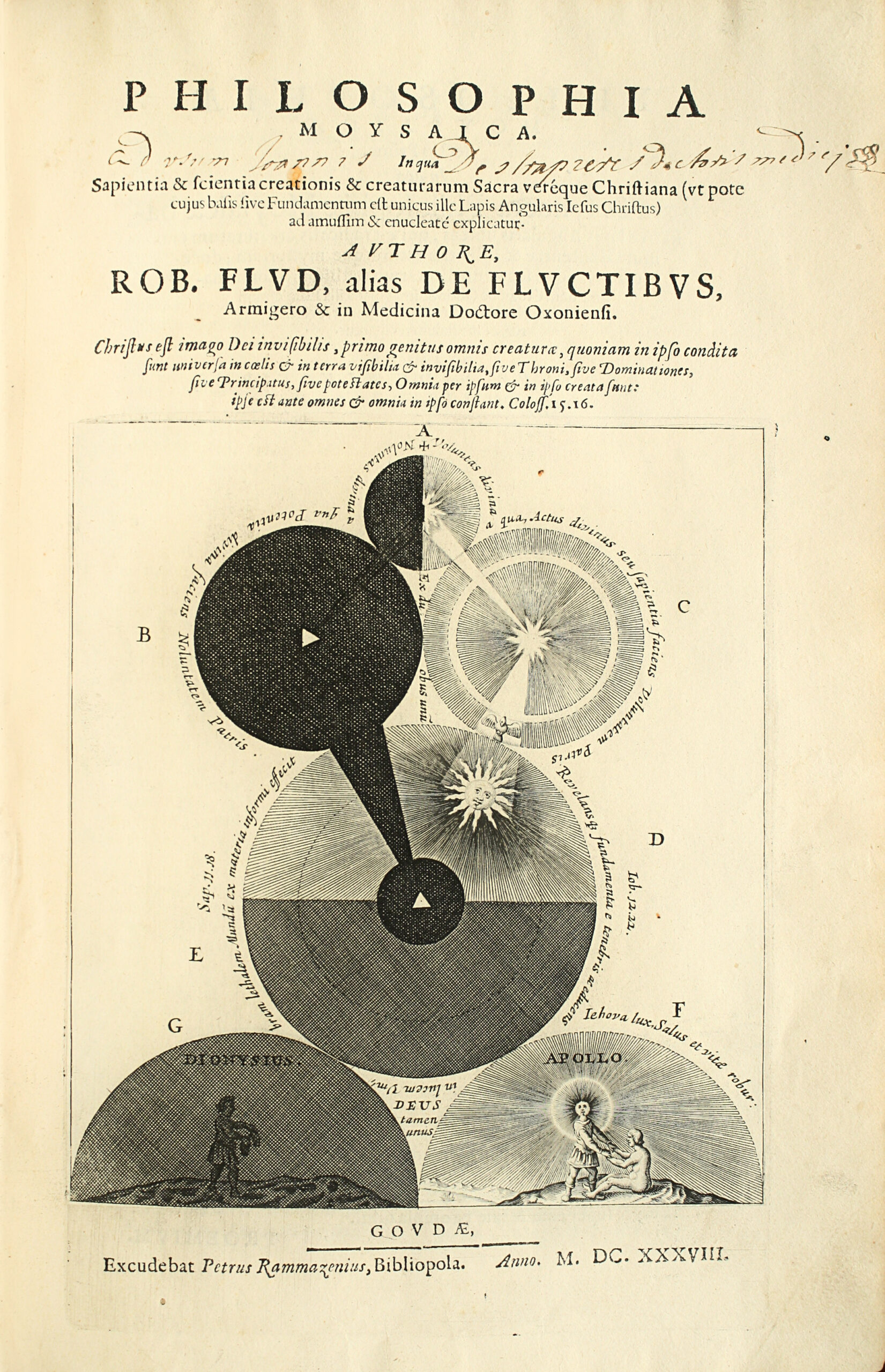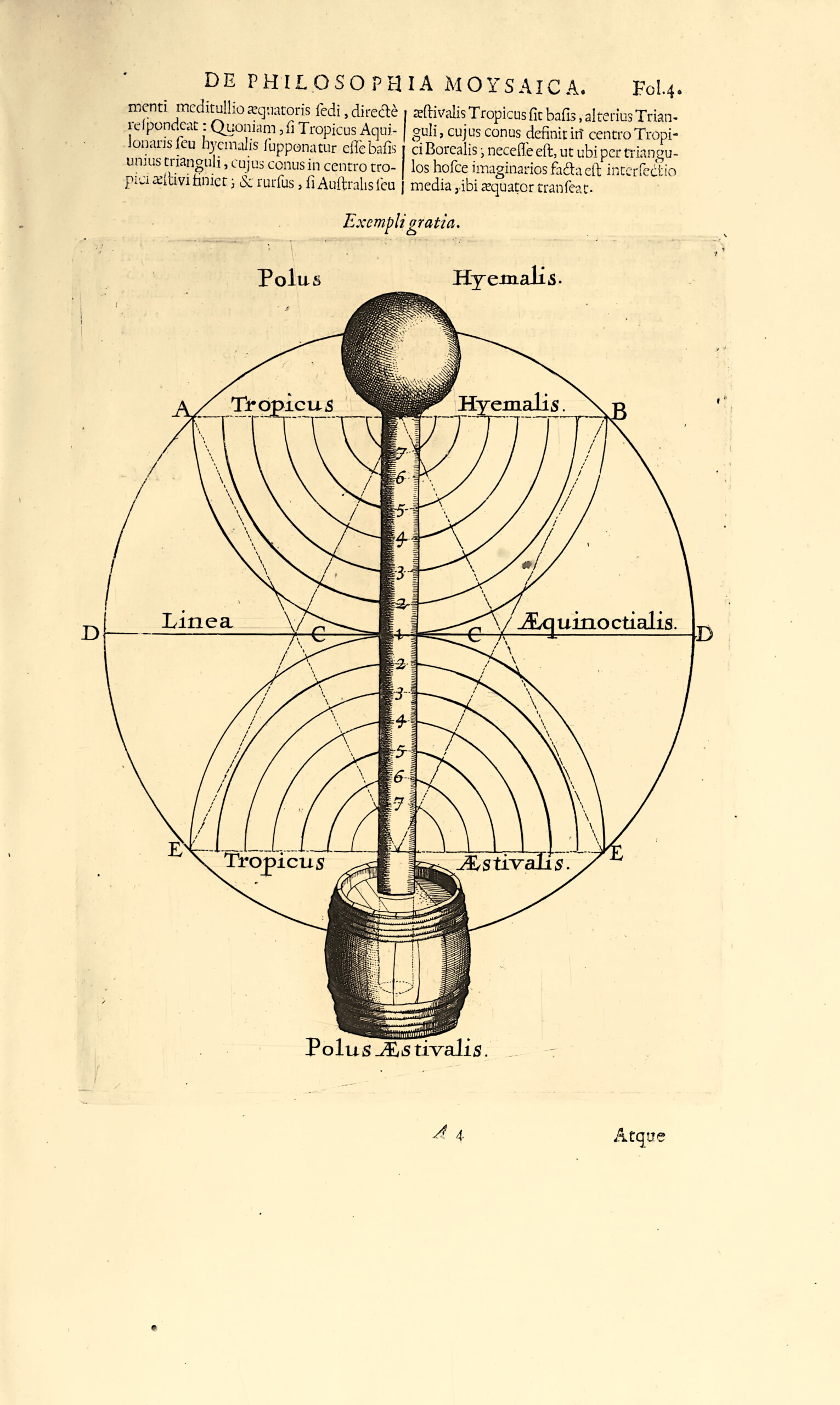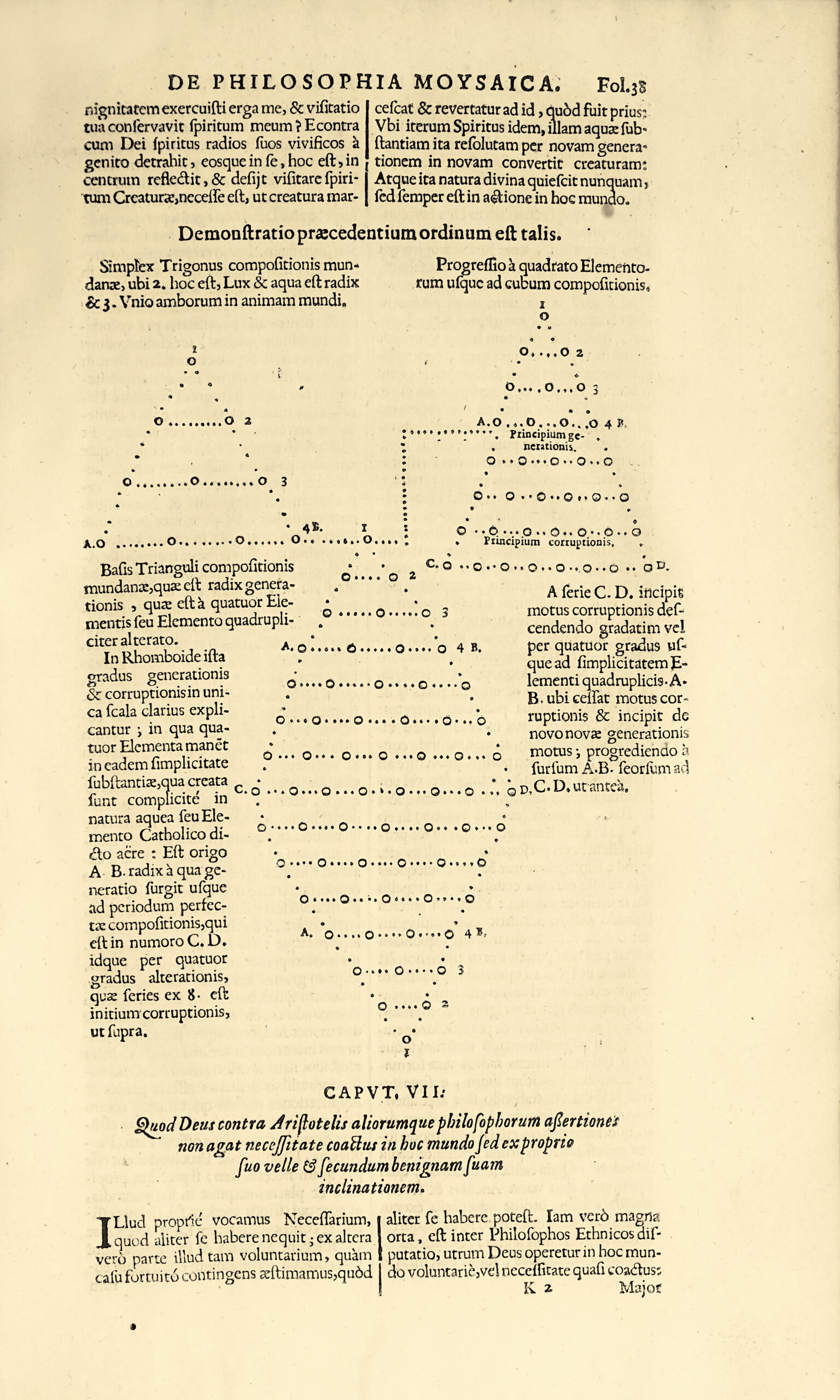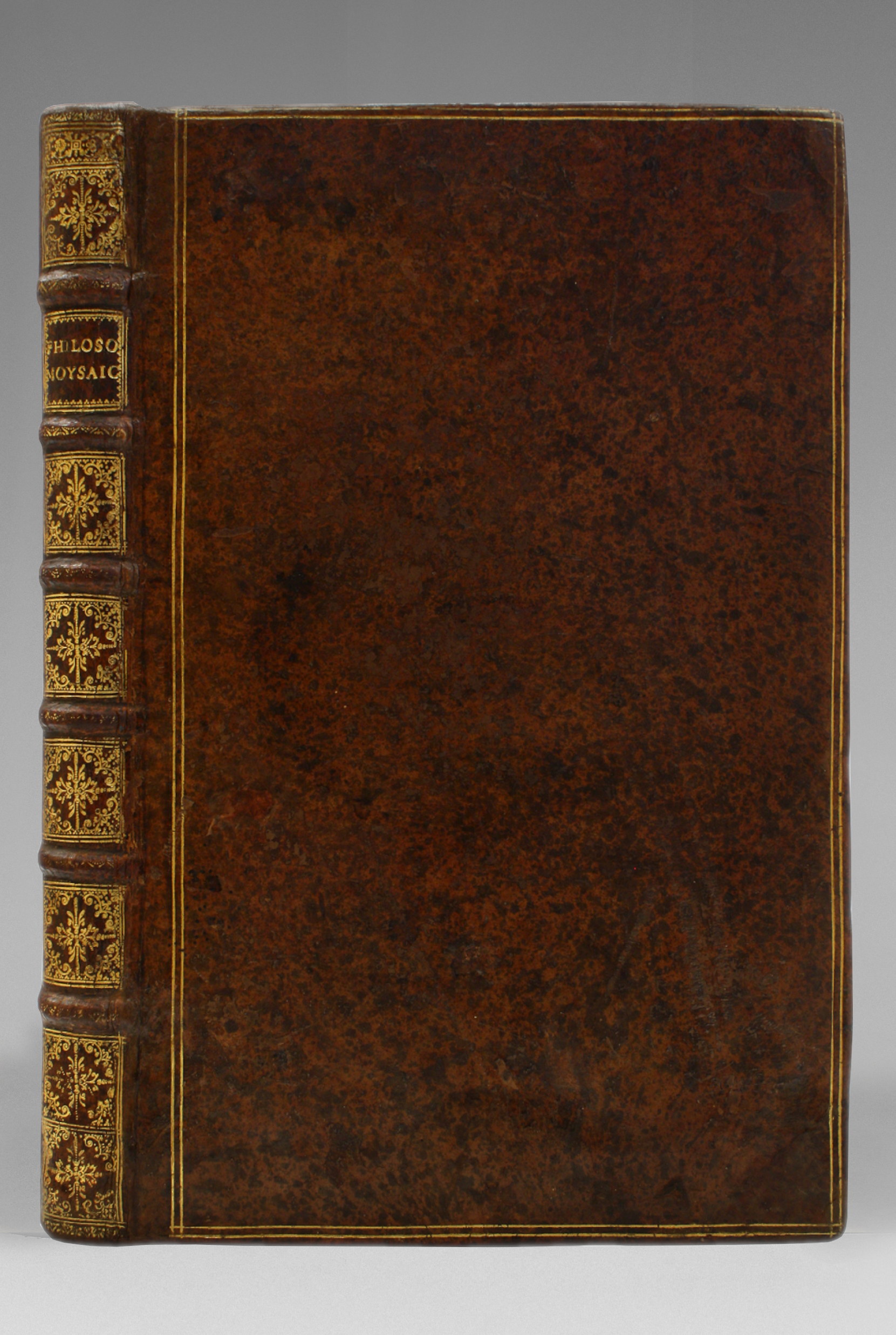Goudae, Petrus Rammazenius, 1638.
Großformat in-4 von (4) Blättern einschließlich des gravierten Titels, 144 Blätter (fälschlicherweise nummeriert 152); 30 Blätter, (1) Blatt Errata zwischen den Blättern 28 und 29 gebunden, zahlreiche Illustrationen im Text. Gebunden in vollgebräuntem gesprenkelten Kalbsleder der Zeit, Goldfileten umrahmen die Deckel, Rücken mit erhabenen Bändern und goldenen Rosetten verziert, rote Schnittkanten auf Marmorierung. Einband der Zeit.
317 x 195 mm.
Posthum erstveröffentlichte Originalausgabe des letzten Essays von Robert Fludd über die Schöpfung. Sir William Osler, Biblotheca Osleriana: Ein Katalog von Büchern, die die Geschichte der Medizin und Wissenschaft veranschaulichen, Nr. 2629; DSB V, 47ff. - Ferguson I, 284. - Wheeler Gift 112-113. - Mottelay S. 554. - Gardner 237 & 236. - Wellcome I, 2331 & 2332. - Poggendorff I, 763 (nur Tl. I). In seinem Werk zeigt Robert Fludd (1574-1638), einer der bekanntesten englischen Philosophen und Alchemisten, die Gleichheit zwischen der Sonne – Quelle des Lichts und des Lebens – und Gott auf. 'In the first half of the seventeenth century [Fludd] was one of England's best known philosophers. Certainly few Englishmen of his day managed to draw the attention of such a distinguished group as Kepler, Mersenne, and Gassendi – êch of whom wrote at lêst one work discussing, and usually complaining of, Fludd's theories. To many Europêns he seemed the most prominent of all English philosophers of his day 'Fludd, like most other Renaissance scientists, and certainly like all Paracelsians, had a bitter hatred of Aristotle even though Aristotelian influences are evident throughout his work. As his authority he preferred to turn to God's two books of revelation – one, His written book, the Holy Scriptures, and the other, nature, God's book of Crêtion Fludd stated that the origin of all things may be sought in the dark chaos (potential unity) from which arose the light (divine illumination or actual unity). He affirmed that there is true unity in this dichotomy since "Light was unto the eternall unity all one with darkness, though unto our wêk capacities they are opposite in property". Continuing, he explained that it was from the darkness or shades of the chaos through the divine light that there appêred the waters which are the pervasive matter of all other substances. This is then true Mosaic philosophy, which is built upon the three primary elements of darkness, light, and the waters or the Spirit of the Lord. And it is with the aid of this divine knowledge that we may bring order even out of the confusion found in the writings of the ancients on the subject. With a careful analysis of their texts Fludd showed that when Aristotle wrote of the prima materia, Plat of the hyle, Hermes of the umbra horrenda, Pythagoras of the "symbolical unity", and Hippocrates of the deformed chaos, they were all writing in rêlity of the darkness or the dark abyss of Moses. Similarly by some name or another all of these philosophers knew something of the Mosaic "light" and "waters". However, in their interpretations they often varied far from the truth and it is to the works of Plato and the Pymander of Hermes that the true adept is urged to go for enlightenment' (Debus, The English Paracelsians pp. 105-109). Ein Schüler von Paracelsus, verteidigt er in diesem berühmten Werk insbesondere die magnetische Medizin, die ihn zur transplantativen Medizin führt: Fludd erläutert so die Tugenden der Transplantation einer Krankheit zwischen Menschen, Tieren und Pflanzen. Die Ausgabe umfasst schließlich die Antwort von Fludd auf die Widerlegung dieses Werkes durch den schottischen Priester Foster: Responsum ad Hoplocrisma-Spongum M. Fosteri (Ibid., id., 1638 – 30 ff.). Das Werk ist mit einem Kupferstichtitel (wiederholt am Anfang des zweiten Teils) und etwa 30 Gravuren im Text, darunter 4 Kupferstiche, illustriert. Schönes Exemplar, das in seiner damaligen Bindung erhalten ist. Herkunft: A N. Brugière de Lamotte (ex-libris eingeprägt) und handschriftliches Exlibris der Zeit auf dem Titel.
Weniger Informationen anzeigen




